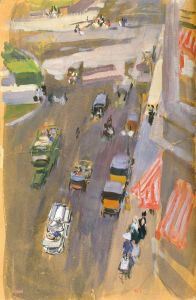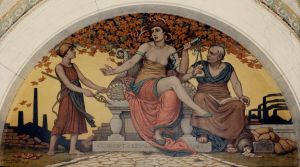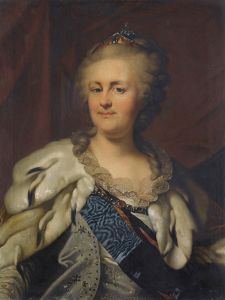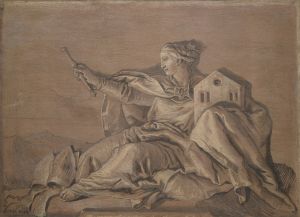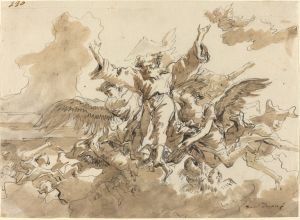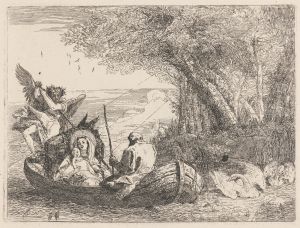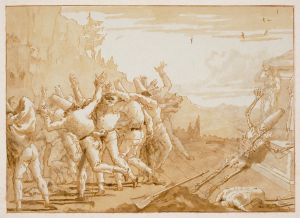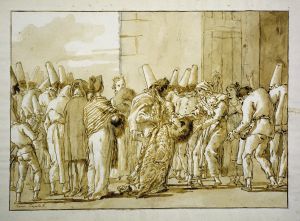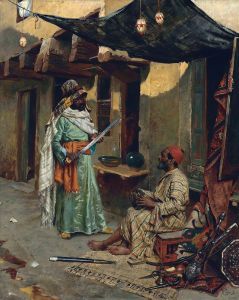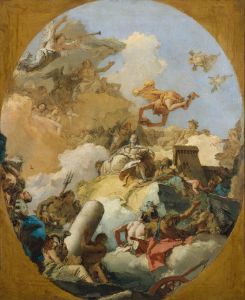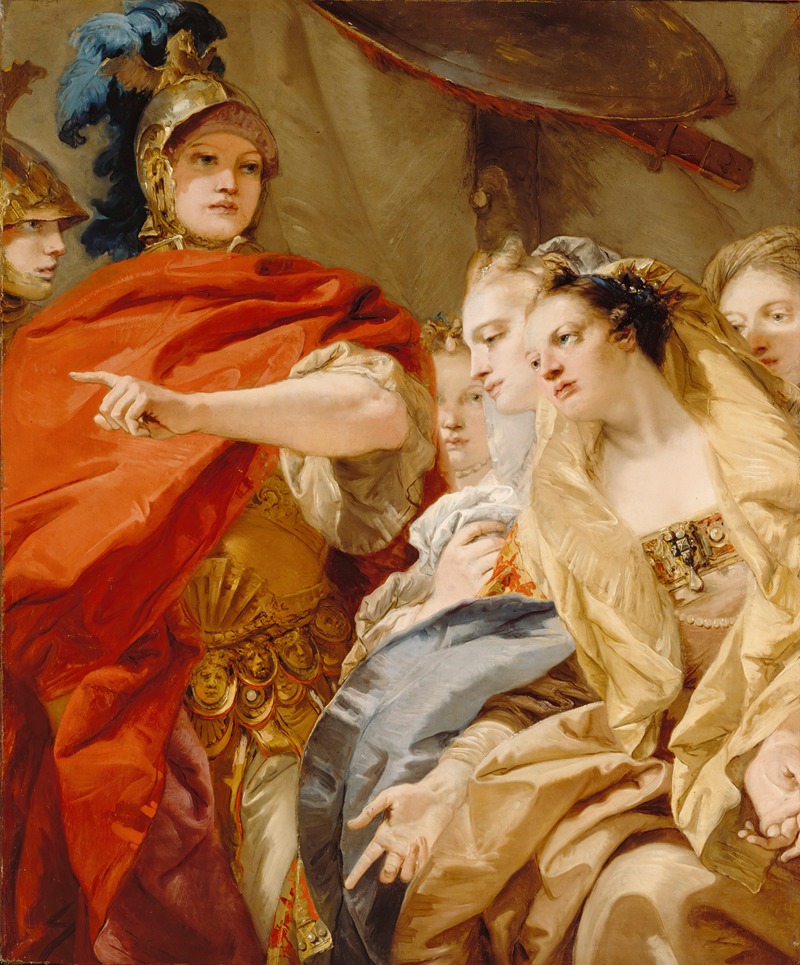
The Women Of Darius Invoking The Clemency Of Alexander
A hand-painted replica of Giovanni Domenico Tiepolo’s masterpiece The Women Of Darius Invoking The Clemency Of Alexander, meticulously crafted by professional artists to capture the true essence of the original. Each piece is created with museum-quality canvas and rare mineral pigments, carefully painted by experienced artists with delicate brushstrokes and rich, layered colors to perfectly recreate the texture of the original artwork. Unlike machine-printed reproductions, this hand-painted version brings the painting to life, infused with the artist’s emotions and skill in every stroke. Whether for personal collection or home decoration, it instantly elevates the artistic atmosphere of any space.
"The Women of Darius Invoking the Clemency of Alexander" is a notable painting by Giovanni Domenico Tiepolo, an Italian artist known for his contributions to the Rococo movement. Giovanni Domenico Tiepolo, often referred to as Giandomenico, was born on August 30, 1727, in Venice and was the son of the renowned painter Giovanni Battista Tiepolo. Giandomenico worked closely with his father and developed his own distinctive style, which combined elements of his father's grandeur with his own more intimate and genre-focused approach.
The painting "The Women of Darius Invoking the Clemency of Alexander" depicts a historical episode from the life of Alexander the Great. The scene is based on an event following the Battle of Issus in 333 BCE, where Alexander the Great defeated Darius III of Persia. After the battle, the family of Darius, including his mother Sisygambis, wife Stateira I, and daughters, were captured by Alexander. According to historical accounts, notably by the ancient historian Plutarch, the women mistakenly prostrated themselves before Alexander's close friend Hephaestion, thinking he was Alexander. Upon realizing their mistake, they were deeply embarrassed, but Alexander reassured them by showing clemency and respect, famously stating that Hephaestion was also Alexander.
Giandomenico Tiepolo's painting captures this moment of clemency and magnanimity. The composition is marked by its dramatic use of light and shadow, a technique that Tiepolo mastered to convey the emotional intensity of the scene. The figures are arranged in a dynamic yet harmonious manner, with the women of Darius depicted in various states of supplication and distress, while Alexander is portrayed with a calm and composed demeanor, emphasizing his noble character.
The painting reflects the Rococo style's characteristic elegance and attention to detail. Tiepolo's use of color is particularly noteworthy, with rich, vibrant hues that bring the scene to life. The artist's skill in rendering textures, such as the luxurious fabrics of the women's garments and the intricate patterns of the Persian attire, adds to the overall opulence of the work.
"The Women of Darius Invoking the Clemency of Alexander" is a testament to Giandomenico Tiepolo's ability to blend historical narrative with artistic finesse. The painting not only illustrates a significant historical event but also showcases the artist's talent in capturing human emotions and interactions. It remains an important work within Tiepolo's oeuvre and a fine example of 18th-century Venetian painting.
Today, this painting is part of the collection at the National Gallery in London, where it continues to be admired by art enthusiasts and historians alike. Its enduring appeal lies in its masterful execution and the timeless story of mercy and humanity it portrays.





